Editor’s Note: Robin North is a member of LTV’s sponsored content team, The Leisure Explorers. Do you own a Leisure Travel Van and enjoy writing? Learn more about joining the team.
One of the things we like about our RV is having a refrigerator. For so long, ice chests and coolers were just part of our camping experience. We would carefully plan meals and often used multiple coolers to keep food and beverages cold. Buying ice to restock the coolers was a daily event: drain the excess water, refill with ice, and reposition the contents – a lot of juggling with ice and food!
Enter the RV refrigerator. With an implied promise of cool drinks and fresh food, RV fridges made camping so much more convenient. But what’s the real scoop on this “must-have” appliance, and how is it different from the fridge in your kitchen at home?
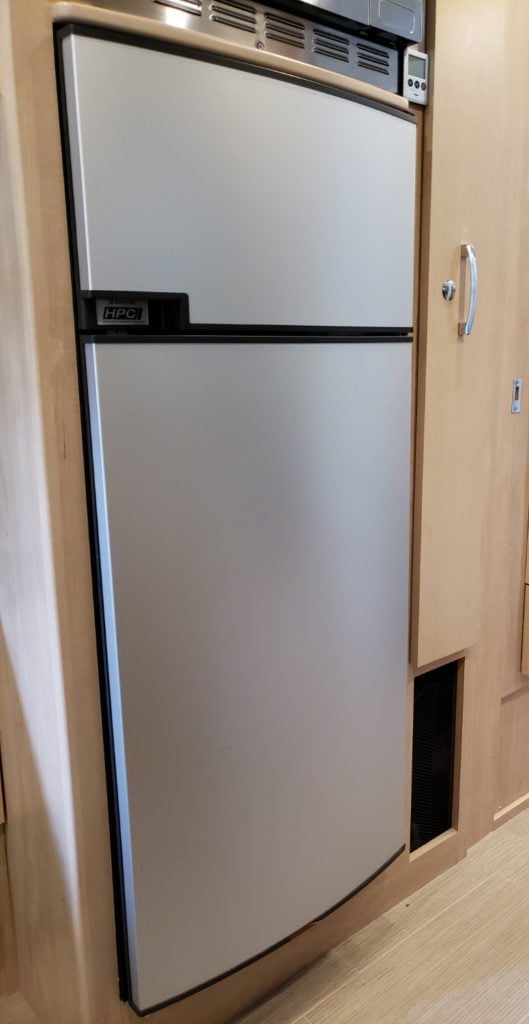
Understanding Your RV Refrigerator
Our Unity MB has a Dometic absorption refrigerator, so this article will cover the operation of that type of fridge. There are several important differences between your home fridge and an absorption RV fridge. The first is how they cool.
The main component of a residential refrigerator that needs power is the compressor. It is essentially a pump that is driven by a motor. The hum you hear when the fridge is on is the compressor working. The thermostat controls the temperature of the fridge by switching the compressor on and off.
The compressor in your home fridge “compresses” the refrigerant vapor, raising its pressure. That pushes the vapor into the coils on the outside of the refrigerator. When that hot vapor in the coils meets the cooler air temperature in your kitchen, the vapor becomes a liquid.
The refrigerant, now in liquid form at high pressure, cools down as it flows into the coils inside the freezer and fridge and absorbs the heat inside the fridge. That cools down the air in the fridge. Finally, the refrigerant evaporates to vapor again and flows back to the compressor where the cycle starts all over again. 1
Our RV fridge does not have a compressor. Instead, it uses a process called absorption. It operates by heat and chemical reactions using a combination of water, ammonia, and hydrogen gas. The liquid water and ammonia are heated together; they react and move into a separator that divides the water and ammonia.
The water and ammonia then travel through separate tubes. The water moves to the absorber, while the ammonia moves to the condenser. The ammonia cools down and turns back into a liquid. Then the ammonia moves to the evaporator and combines with hydrogen gas, causing it to evaporate in cold vapor form.
The cold vapor moves to the interior cooling coils, which cool the entire interior of the refrigerator, starting in the freezer, and moving down into the refrigerator. The vapor now continues its journey back into the absorber, mixes with water, and the process starts all over again. 2
If you’ve ever wondered if a residential fridge could be used in an RV, it’s best to keep in mind that an RV is a “rolling earthquake”! All that shaking and jostling on the road is not the best environment for something designed for your home kitchen. RV fridges use fewer moving parts, and are typically built of steel and durable enough to withstand the motion and vibrations of RV travel.

Powering Up Your Fridge
There is also a difference in the way your home fridge and an RV fridge use power. Your fridge at home operates on electricity, whereas some RV fridges, like the one in my RV, can be powered by electricity – either from shore power hook-up or produced by a generator – propane, or the coach battery (DC power).
Many of the newer 3-way RV refrigerators have a feature that uses propane as a backup fuel source if electricity becomes unavailable. And some, referred to as 3-way fridges, are able to switch between all three different power sources above. The more sophisticated units have an automatic switching system that chooses the best power supply available. When your RV is hooked up to shore power at camp, the fridge uses the shore power. When you are driving, the fridge uses the coach battery. And when you boondock without electrical hookups, the fridge runs on propane.
Other types of RV fridges have to be manually switched between propane and electricity (either the coach batteries, shore power, or generator). When you arrive at your campsite, you’ll need to switch the fridge to shore power unless you are boondocking. When boondocking, you will need to switch it to propane. Although you can run an RV fridge on the coach battery, you need to consider that it will drain your coach battery over time. As for using a generator, most campgrounds don’t allow extended use of a generator – and you don’t really want to listen to generator noise while you are camping, do you?
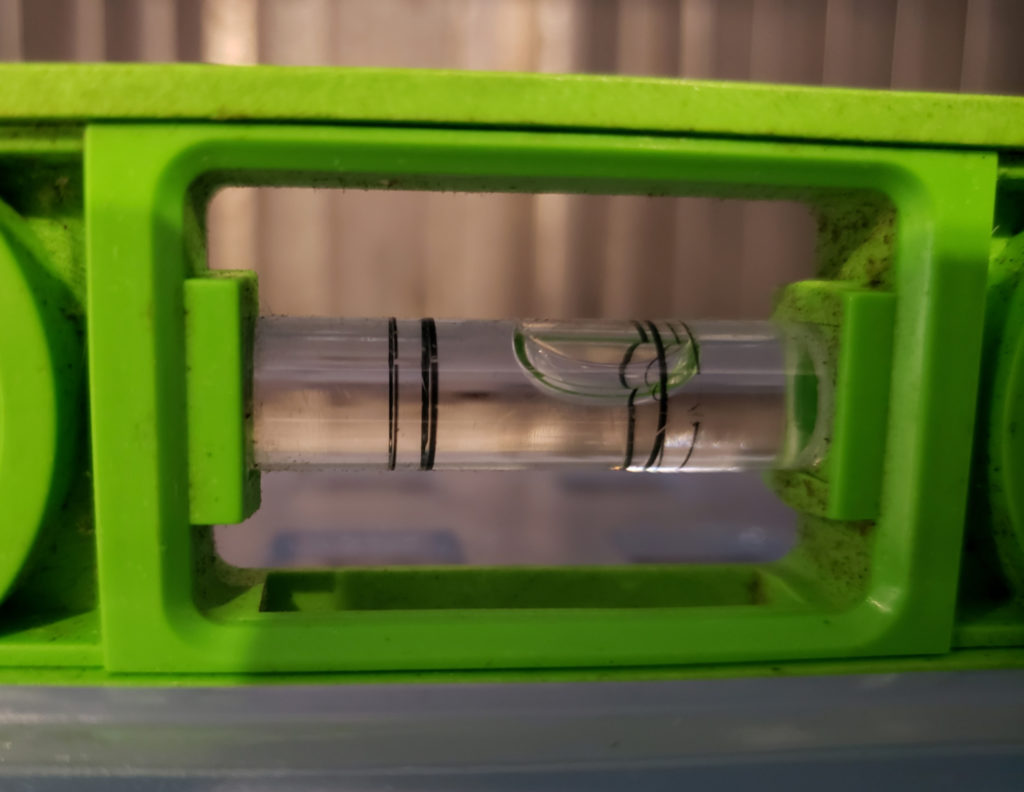
Keep It Level
One key to successful cooling with an absorption fridge is to have the RV parked as level as possible. Gravity is critical to the RV refrigeration process. Without it, the ammonia liquid will not properly flow to the evaporator coils to cool the refrigerator. Having your RV off-level not only disrupts the proper flow of the ammonia, but it can allow ammonia crystals to form inside the refrigerator’s tubing. Over time, these crystals accumulate until the flow is restricted or blocked. Some suggest that an absorption RV refrigerator should not be more than 3 degrees off-level left to right, or 6 degrees off-level front to back. 3
Cooling Your Expectations
“Why isn’t the food cold?” We hear this question a lot when we talk to other RVers. Although an absorption RV fridge is a great upgrade from a cooler, there are a few things to understand about its capacity to cool. These RV refrigerators can maintain a temperature of about 40 degrees Fahrenheit (F) below the ambient room temperature. So, if your RV temperature is 75 degrees F, then the fridge can probably maintain an internal temperature of 35+/- degrees F. If the temperature in your RV begins to climb, the RV fridge has to work a lot harder to maintain its temperature. And in extreme heat, they do not always succeed.
There are a few strategies to help your absorption fridge perform at its best cooling capacity:
- The refrigerator takes about 24 hours to get cold. In hot weather, it takes even longer to get cold. It’s a good idea to start cooling down the fridge the night before a trip. Even if your fridge has to use propane for that 24-hour period, the absorption cooling process is pretty efficient and uses minimal amounts of propane.
- This fridge is better at keeping items cool than cooling down room temperature or warm food. So, give your RV fridge a boost by making sure the food you put into the fridge is already cold.
- An RV refrigerator is typically pretty small, so it makes sense to think carefully about the size of items you’ll use for food storage and the size of food items that need cooling. To save space, use smaller containers, chop/cut food up so it cools more quickly, and consider using food storage bags rather than plastic containers. Smaller size condiments are a good idea, too.
- The fridge will cool better if you leave lots of space for the air to circulate. We use wire baskets to contain items in the fridge instead of plastic containers. The wire itself gets cold, and the baskets allow air to flow around the food items.
- Shop more frequently for smaller amounts of fresh foods. Farmers markets are a common sight in most towns and cities. Having only the fresh foods you will eat today or tomorrow on-hand keeps your fridge less crowded.

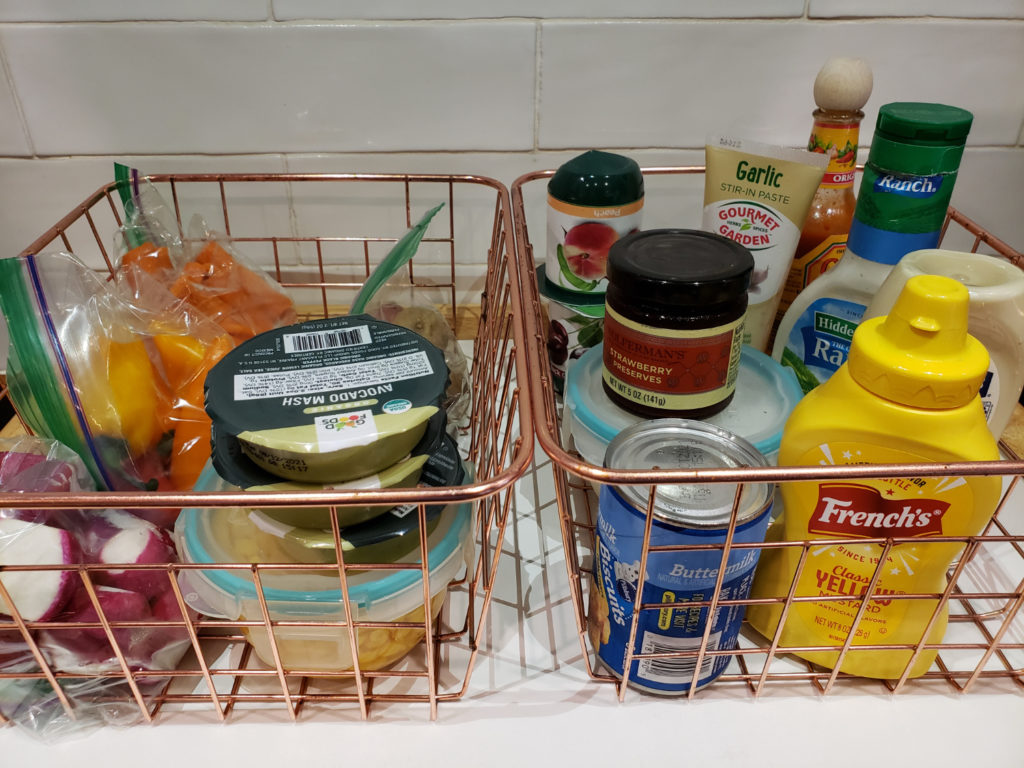
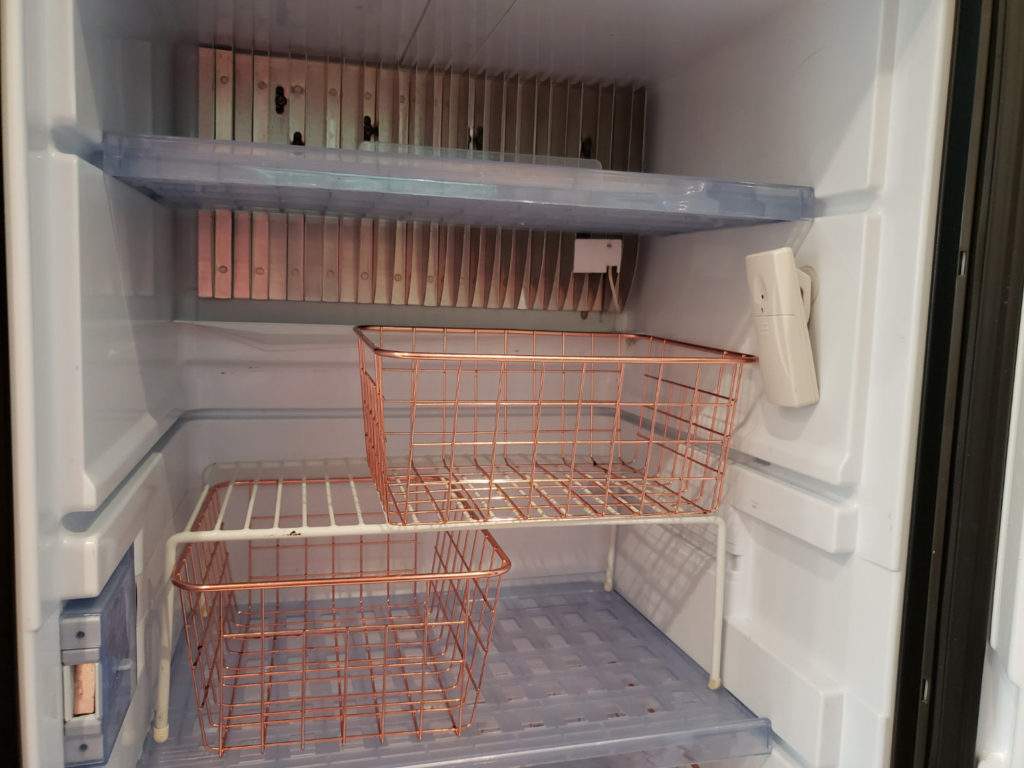
- Keep the fridge door closed, and don’t open it any more than absolutely necessary, especially in hot weather. Consider taking along a small cooler for snacks and beverages to keep from opening the fridge for frequently accessed items.
- Try using an RV refrigerator fan. This helps to cool things down faster, and the circulating cool air keeps temperatures more stable. A fan is pretty inexpensive and runs on batteries.
- An inexpensive thermometer can help you keep track of internal fridge temperatures. The ideal temperature for the refrigerator should remain between 34 to 39 degrees F; while the freezer should remain at between 0 to 10 degrees F. These recommended temperatures prevent food from spoiling.
- Check for frost build-up in the freezer. Defrost the freezer as necessary to keep it working efficiently and maximize space. To prevent damage, never use a pick or sharp knife, or heat sources like a hairdryer, to defrost the freezer.
- Keep the refrigerator level to prevent damage and maintain operating efficiency. Check all around the refrigerator area to make sure it is free and clear from obstructions, dust, and dirt, especially near the vents.
- If you aren’t using your RV for a while, run the refrigerator periodically to check for potential noises or clogs and to make sure it’s working properly.
- Check seals around the doors to keep cold air inside. Seals can dry out and crack, making your fridge less efficient.
The Freezer
We have found that the freezer compartment in our RV fridge seems to perform better than the refrigerator compartment. Even when temperatures climb, the freezer seems to stay frozen. Since an absorption process begins cooling the freezer first and then the refrigerator compartment second, this makes sense. So, we make sure that any food going into the freezer is already frozen. That way the RV freezer doesn’t have to work to freeze warm food.
A trick we use to make the most of our RV freezer is to create frozen food “tiles”. We pre-freeze spaghetti sauce, cooked and shredded chicken, soups, and green beans in freezer bags, making sure they lay flat while freezing. Once frozen, they stack up in the RV freezer like icy tiles, making the most of that small space while helping to keep the freezer colder.
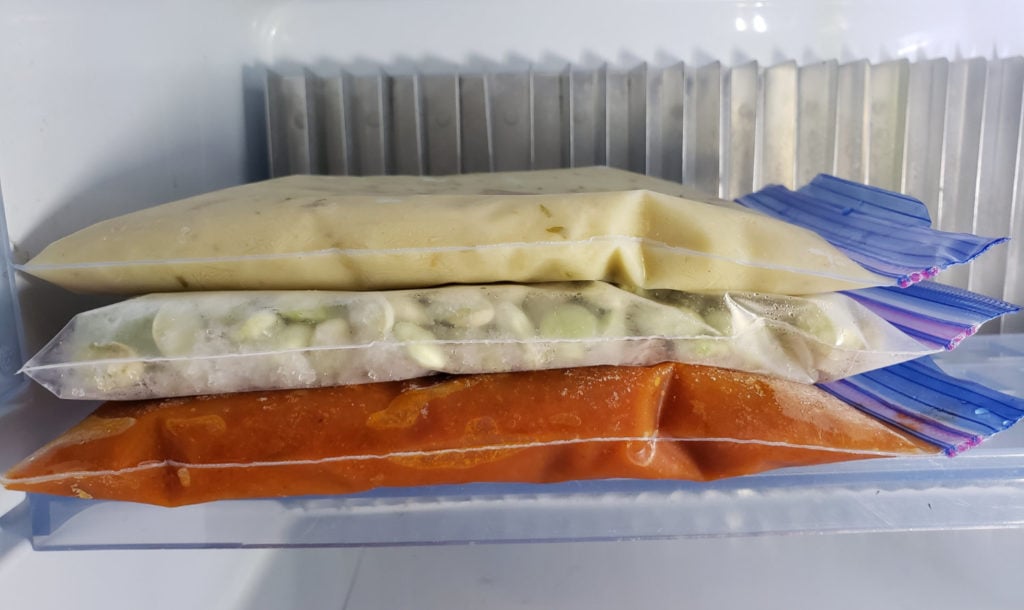
An RV fridge is a wonderful convenience while camping, and with a little planning and preparation, it can work quite well to keep your food fresh. Plan on shopping for fresh foods more frequently while traveling. Not only will this help keep your fridge from being overcrowded, but will allow you to “taste” your destination!
Please note: The recommendations expressed in this article are those of the author(s) and are not necessarily those of Leisure Travel Vans.
1 Nicole Storza, ‘How Does A Refrigerator Work’, RealSimple.com, realsimple.com/food-recipes/tools-products/appliances/how-does-refrigerator-work, (accessed 3 July 2021) ↩
2 J.D. Power Nada Guides, ‘How Does An RV Refrigerator Work and Differ From A Conventional One?’ nadaguides.com, J.D. Power Nada Guides, nadaguides.com/RVs/shopping-guides/how-does-an-rv-refrigerator-work, (accessed 3 July 2021)↩
3 Truck Camper Adventure, ‘RV Refrigerators: How Level Should They Be?’, truckcampereadventure.com, Truck Camper Adventure, truckcamperadventure.com/rv-refrigerators-how-level-should-they/?sfw=pass1626188331, (accessed 3 July 2021)↩


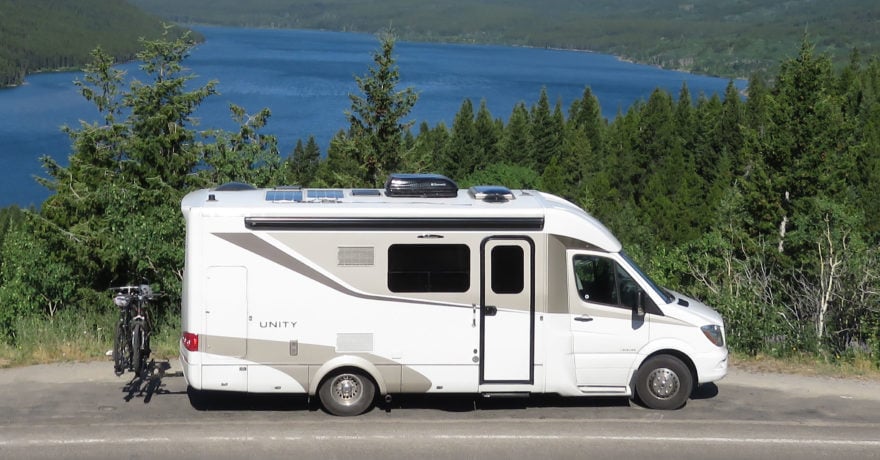
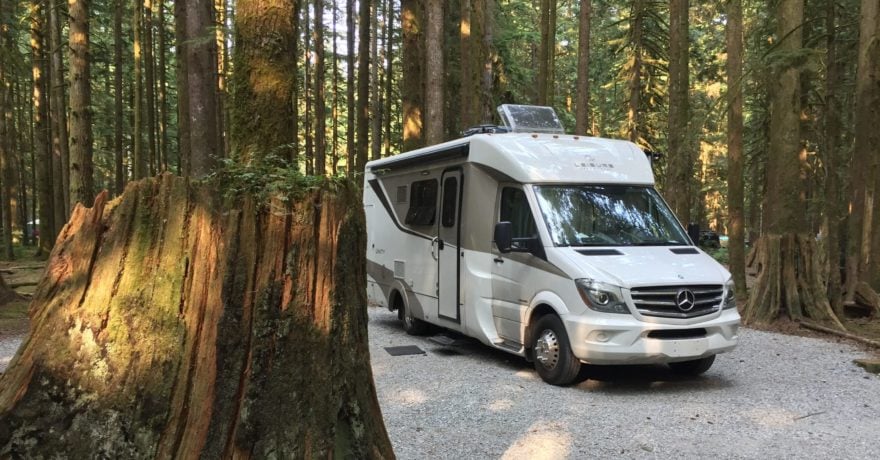
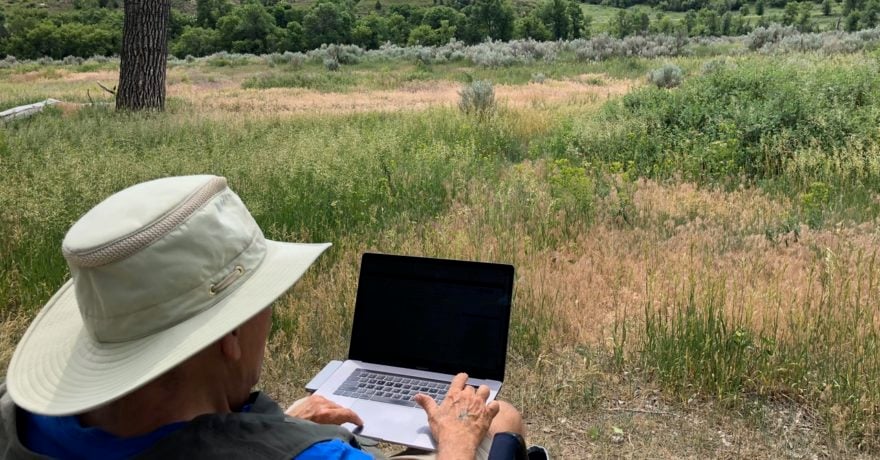
Comments